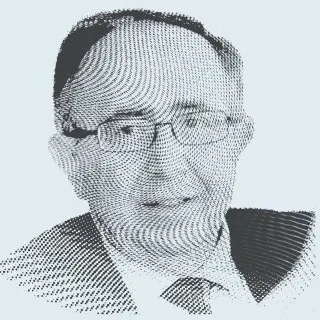Idlib, in northwestern Syria, has witnessed large demonstrations in recent days, following a series of protests in cities and villages surrounding it, extending to some of the countryside of its sister city, Aleppo. These movements brought to mind scenes and chants of the first anti-regime demonstrations that swept the region, in mid-2011.
The protesters chanted slogans that ranged from demanding change to the overthrow of the regime, and called for ousting Abu Mohammad al-Jolani and the Hayat Tahrir al-Sham (HTS), which he has led since the establishment of its nucleus, Al-Nusra Front - Al-Qaeda’s branch in Syria - in 2012.
Idlib and its surroundings constitute a microcosm of Syria. It includes among its main population hundreds of thousands of Syrian residents, some of whom were displaced and settled there as a result of war, while others were revolutionaries and fighters who were part of the settlements with the regime in the central and southern governorates, including Homs, Damascus, Daraa and Quneitra. This has led the population in Idlib to grow to over four million people, distributed among dozens of cities and villages, in addition to more than one thousand and two hundred camps.
Demonstrations against Al-Jolani are nothing new and have been ongoing for years, up until the recent movements. They began when Al-Jolani captured the region and tightened control over it six years ago, following a series of confrontations carried out by the HTS, i.e. Al-Nusra Front, in cooperation with extremist Islamic groups, including Ahrar al-Sham Movement, against the Free Syrian Army.
After the overthrow of the Free Army in the region, Al-Nusra crushed most of the extremist groups, or curbed their influence, and took sole control of Idlib. It sought to create an extremist Islamic emirate at home, while it forged understandings with the outside, seeking to shed its image that is linked to terrorism and extremism and pave the way for regional and international relations. Al-Jolani and the HTS ignored the accusations and adopted formal slogans suggesting their adherence to the Syrian revolution, including raising the revolution’s flag with its three red stars.
The past years have revealed the extent of the differences between Al-Jolani and the HTS on the one hand, and the Syrian majority in Idlib on the other. They include differences between extremist and moderate Islam, and a divergence in the position on the revolution and its goal: The first sees it as a quest for an emirate or a strict Islamic state, and the second is working for a democratic state that provides freedom, justice, and equality for all Syrians.
All of this comes in addition to differences in means and policies, and disputes about daily life between what the HTS imposes and desires in terms of the behavior of men and women, down to what they wear, and what the residents of Idlib and its people are accustomed and aspire to.
On top of all of the above, the HTS has established a terrifying and brutal security system that is almost identical to that of the regime, and has added to it a collection mechanism based on plundering the humble resources of the population, through taxes, fees, and penalties. This mechanism was implemented in parallel with a primitive and faltering system of services mired in corruption and crime that sparked much criticism, even among the group's leaders, including Al-Jolani.
The past years have accumulated a long and complex legacy of contradictions and created a rift between the residents of Idlib and the de facto authority represented and led by Al-Jolani.
The repercussions of the “agents’ issue” emerged in the form of disagreements within Al-Jolani’s inner circle. Discussions became open and public regarding cases of arrest and accusations of collusion, torture, corruption, abuse of power, and plundering the population.
The situation sparked widespread popular anger expressed by massive demonstrations, calling for salvation from Al-Jolani and his gang, and for a new participatory system that is more responsive to the interests of the population and closer to the goals of the Syrian revolution, for which the residents of Idlib and most Syrians have made many sacrifices for in the past 13 years.
The leaders of the HTS, led by Al-Jolani, have sought to absorb the resentment of the demonstrators and circumvent their demands with moderate reform proposals, which dismiss the calls to isolate Al-Jolani and the HTS in exchange for reforms and formal changes that move Idlib from the “stage of one-party rule” to the system of the “National Progressive Front,” which Hafez al-Assad implemented in Syria after he came to power in 1970.
But the success of this option is difficult in light of events in the past years and in view of the structure of the HTS and Al-Jolani's position in it. This means that the conflict in Idlib is heading towards a resolution in favor of one of the sides, making each of them mobilize all energies and possible tools in the conflict, while keeping in mind the difference between the capabilities of each party.
Despite the odds in the balance of power, which is leaning towards Al-Jolani and the HTS, the Turkish factor will have an important impact on the conflict in Idlib, because Ankara’s support of one party boosts its chances of victory over the other.
However, Türkiye can engage a new balancing game between the two sides if it decides not to further increase Al-Jolani’s power at a time when each party in Syria is seeking to strengthen its position.











